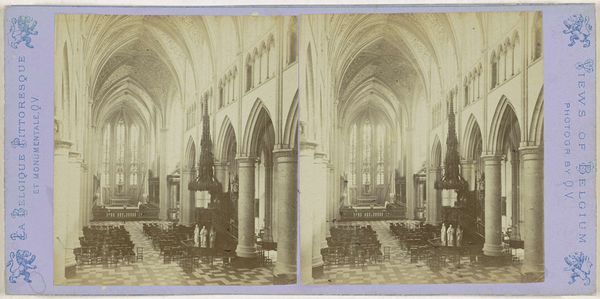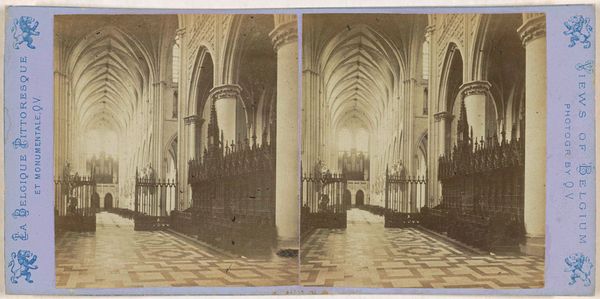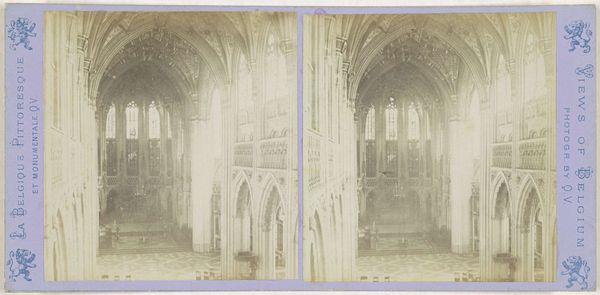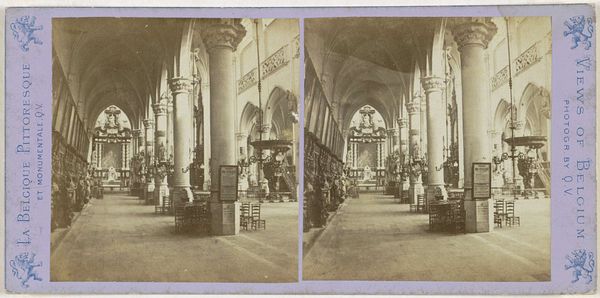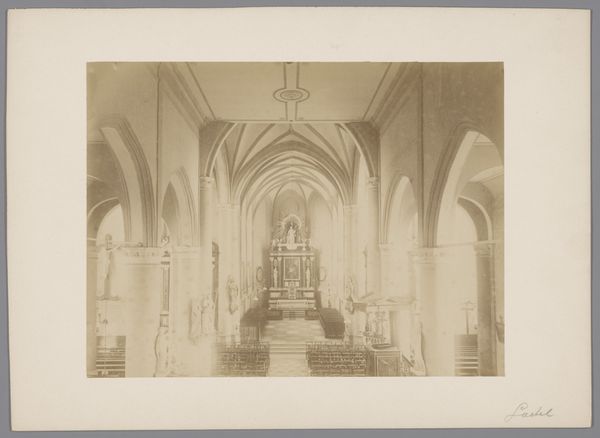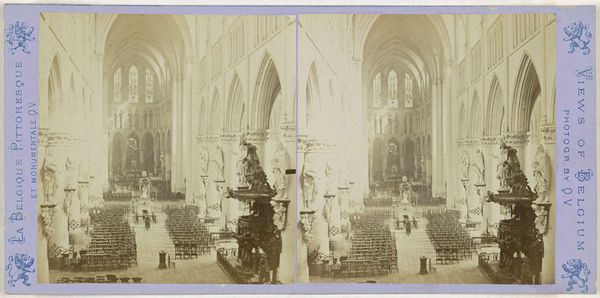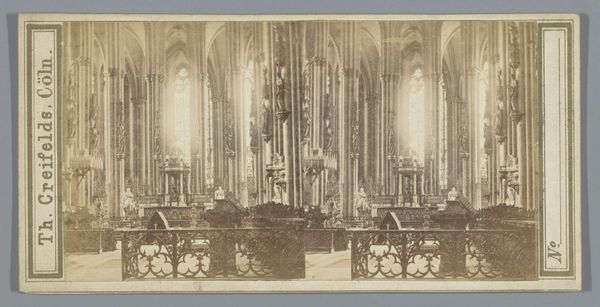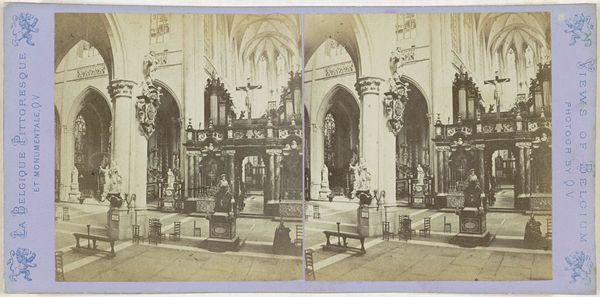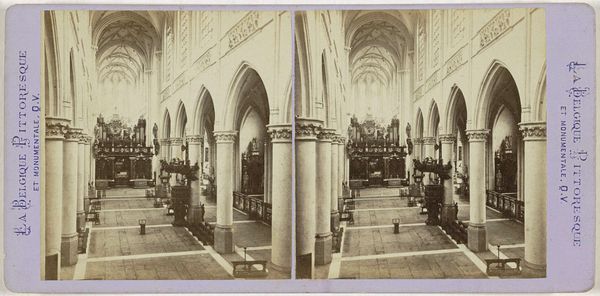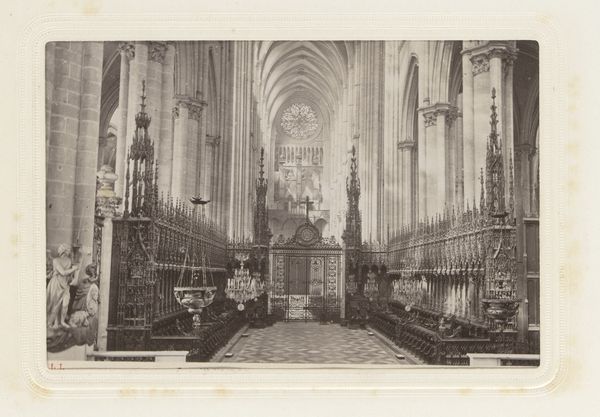
Interieur van de Sint-Romboutskathedraal in Mechelen 1866 - 1870
0:00
0:00
Dimensions: height 85 mm, width 175 mm
Copyright: Rijks Museum: Open Domain
This is Jules Hippolyte Quéval’s photograph of the interior of St. Rumbold's Cathedral in Mechelen. It’s a stereoscopic albumen print, likely made in the 1860s or 70s. Quéval was part of a wave of 19th-century photographers who captured European monuments. This one offers a glimpse into the heart of religious life in Belgium, a country deeply shaped by its Catholic heritage. The Cathedral, with its soaring Gothic architecture, symbolizes the power and endurance of the Church. What makes this image interesting to a social historian is how it presents that institution to the public. Photography was still a relatively new medium, and its use in depicting religious spaces speaks to the evolving relationship between the church and its followers. How did the church want to be seen? What kind of experience did it want to convey? To really understand this photograph, we might turn to church records, local histories, and accounts of religious practices. The image itself is just the starting point for understanding the complex interplay of faith, culture, and representation.
Comments
No comments
Be the first to comment and join the conversation on the ultimate creative platform.
